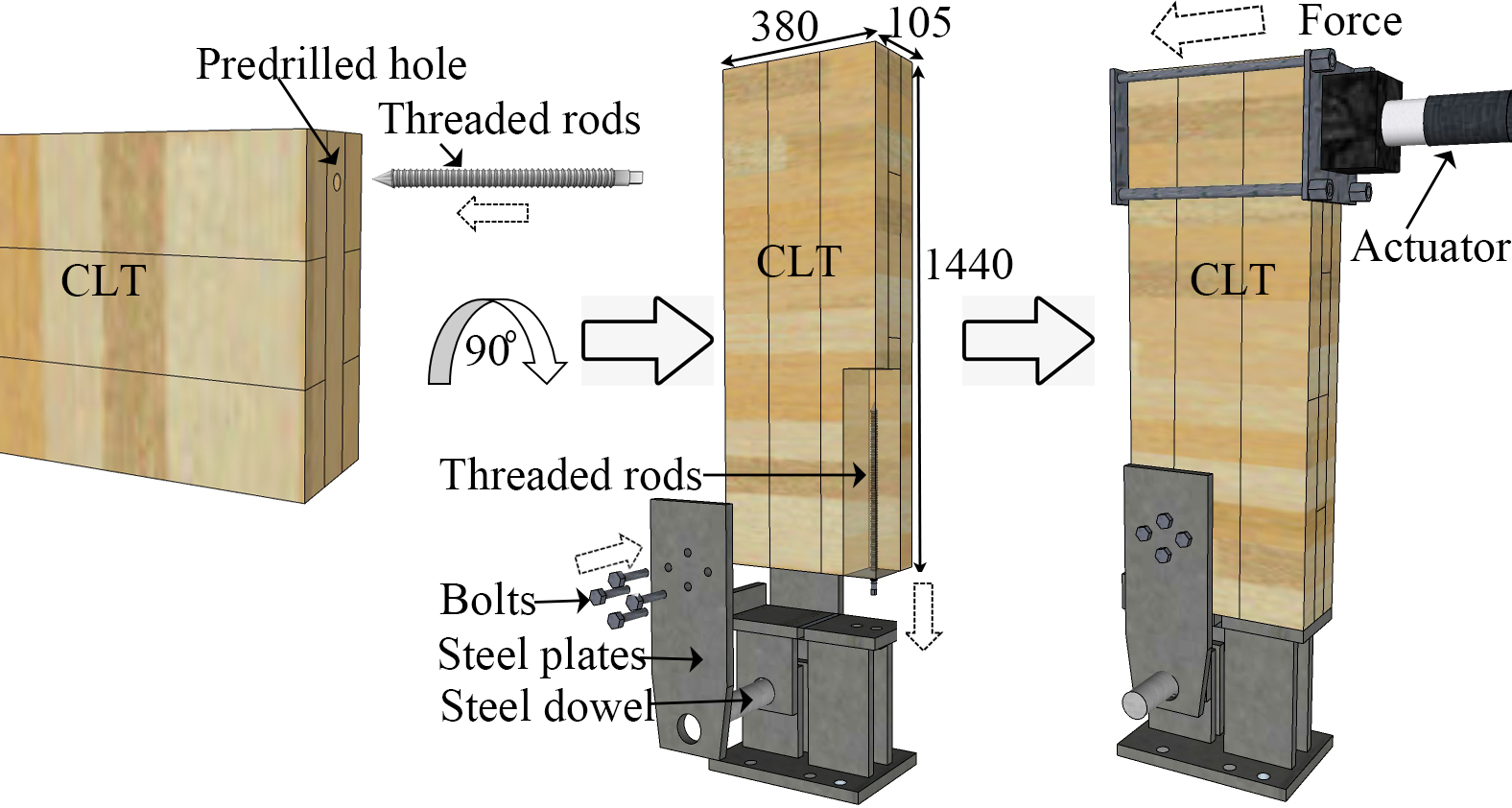 Open Access
Open Access
ARTICLE
Pull-out Behaviour of Axially Loaded Screwed-in Threaded Rods Embedded in CLT Elements: Experimental Study
1
Nanjing Tech University, Nanjing, 211816, China
2
Southeast University, Nanjing, 211189, China
3
Sanjiang University, Nanjing, 210012, China
* Corresponding Author: Huifeng Yang. Email:
(This article belongs to the Special Issue: Research and Innovations in Engineered Timber and Mass Timber Products for Sustainable Built-Environment)
Journal of Renewable Materials 2022, 10(1), 105-117. https://doi.org/10.32604/jrm.2021.016118
Received 08 February 2021; Accepted 03 March 2021; Issue published 27 July 2021
Abstract
Experimental investigation on the pull-out behaviour, including the withdrawal capacity, slip stiffness and interfacial shear stress, of axially loaded screwed-in threaded rod embedded in cross laminated timber (CLT) was conducted. Specimens with varying embedment length and different number of threaded rods were tested in this study. To prevent premature splitting failure of timber, some specimens were reinforced in the direction perpendicular to the timber grain with self-tapping screws. Test results showed that the screwed-in threaded rod connections exhibited good pull-out behaviour with high withdrawal capacity and slip stiffness. Within a certain range, the withdrawal capacity increases considerably with the increase of embedment length, while the average interfacial shear stress shows the opposite tendency. The self-tapping screws played an important role on reducing the splitting of the timber and improving the withdrawal capacity and slip stiffness of the screwed-in threaded rod. Additionally, for the specimens with self-tapping screw reinforcements, the improvement of withdrawal capacity and stiffness when increasing the number of threaded rods are much more obvious than that of the specimens without the self-tapping screws, due to the change of failure modes.Graphic Abstract

Keywords
Cite This Article
Citations
 Copyright © 2022 The Author(s). Published by Tech Science Press.
Copyright © 2022 The Author(s). Published by Tech Science Press.This work is licensed under a Creative Commons Attribution 4.0 International License , which permits unrestricted use, distribution, and reproduction in any medium, provided the original work is properly cited.


 Submit a Paper
Submit a Paper Propose a Special lssue
Propose a Special lssue View Full Text
View Full Text Download PDF
Download PDF

 Downloads
Downloads
 Citation Tools
Citation Tools